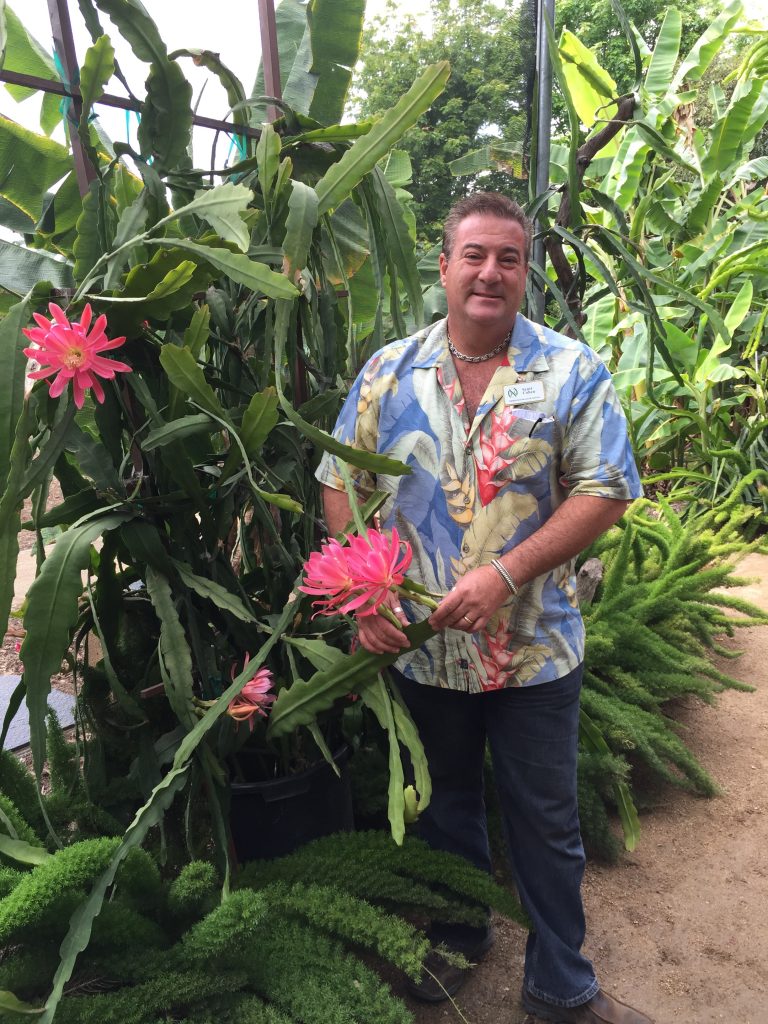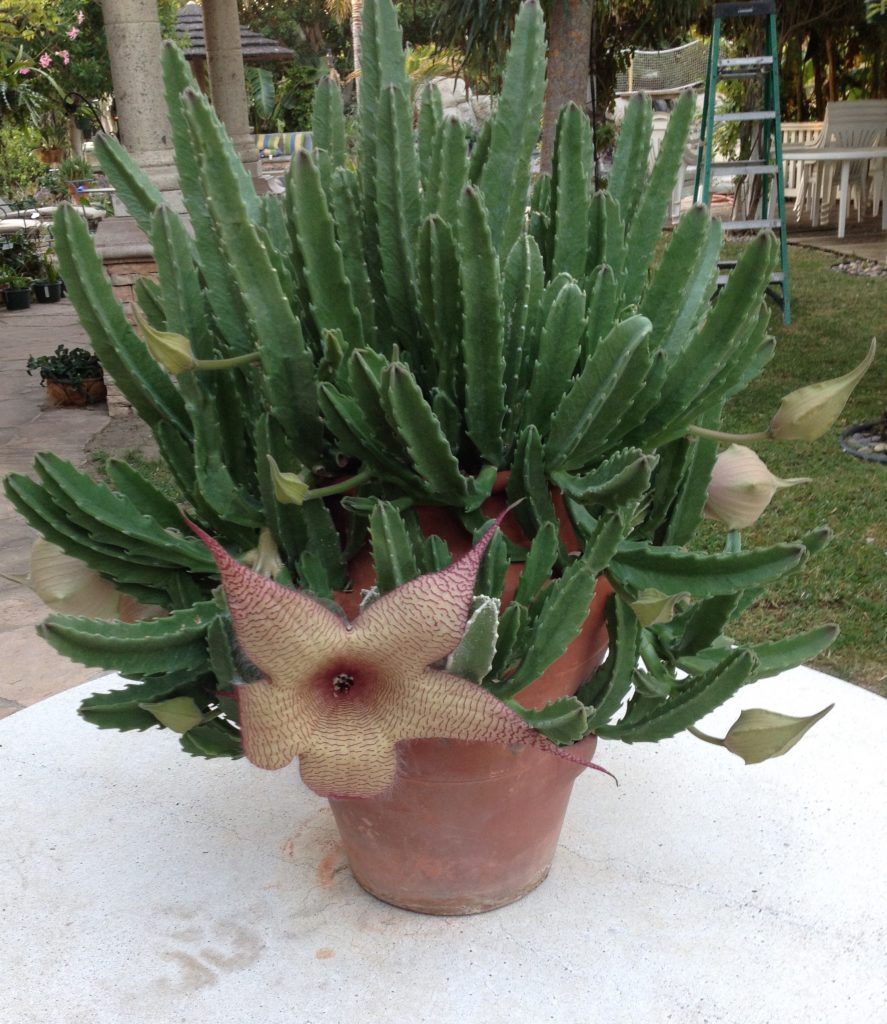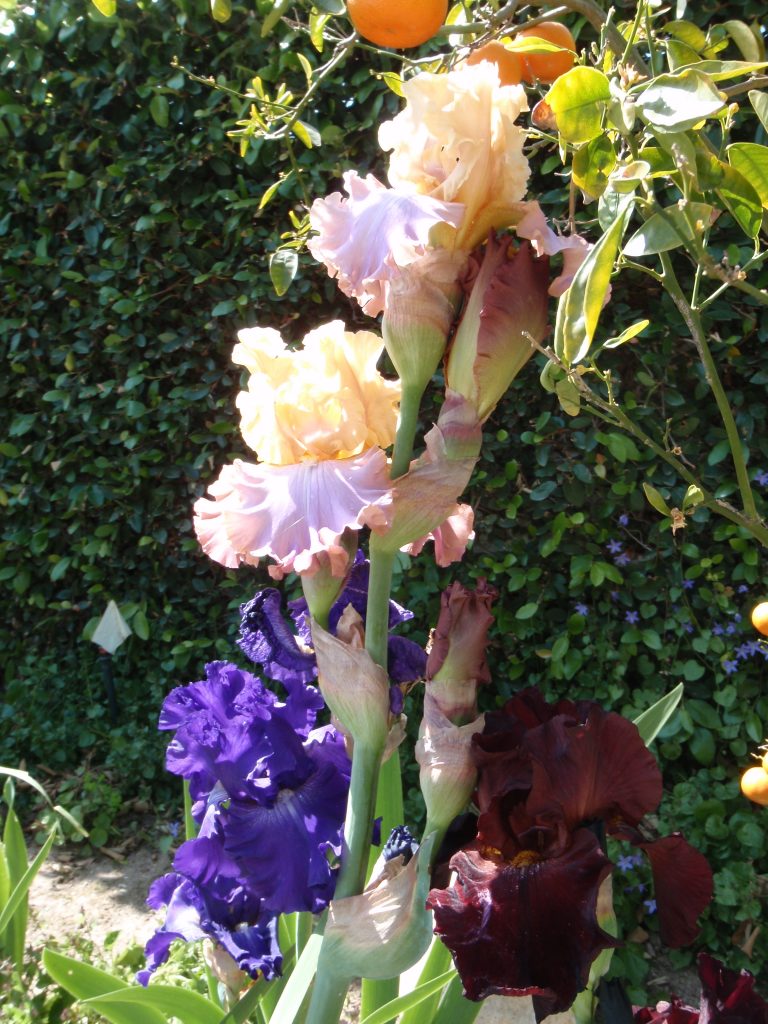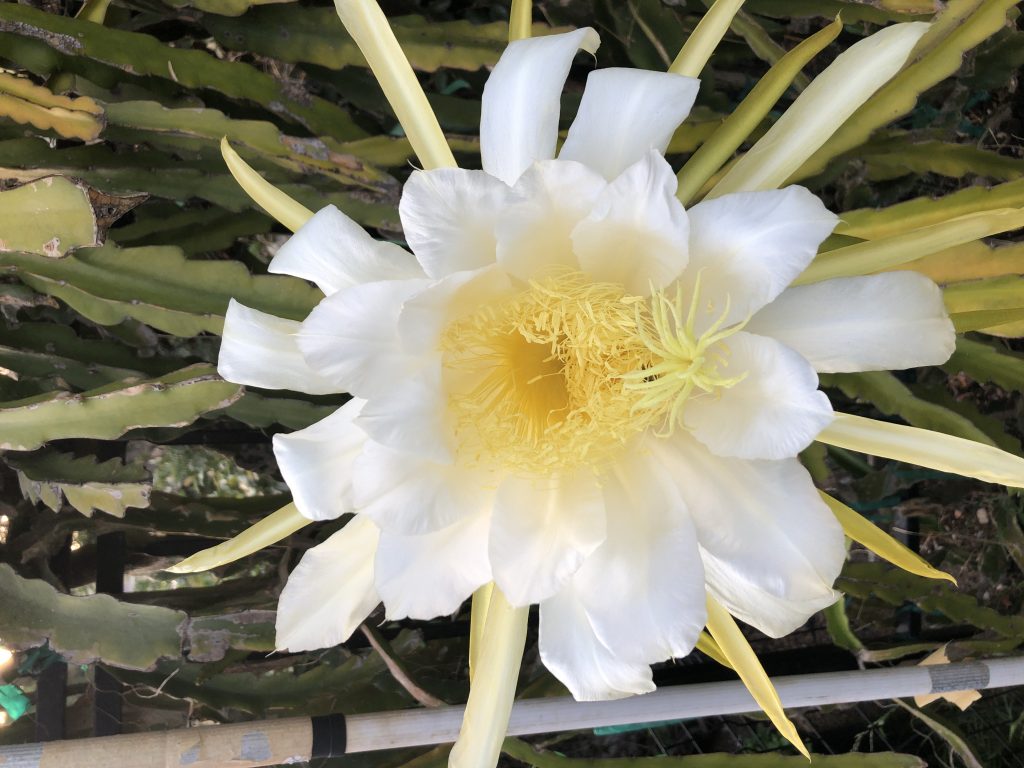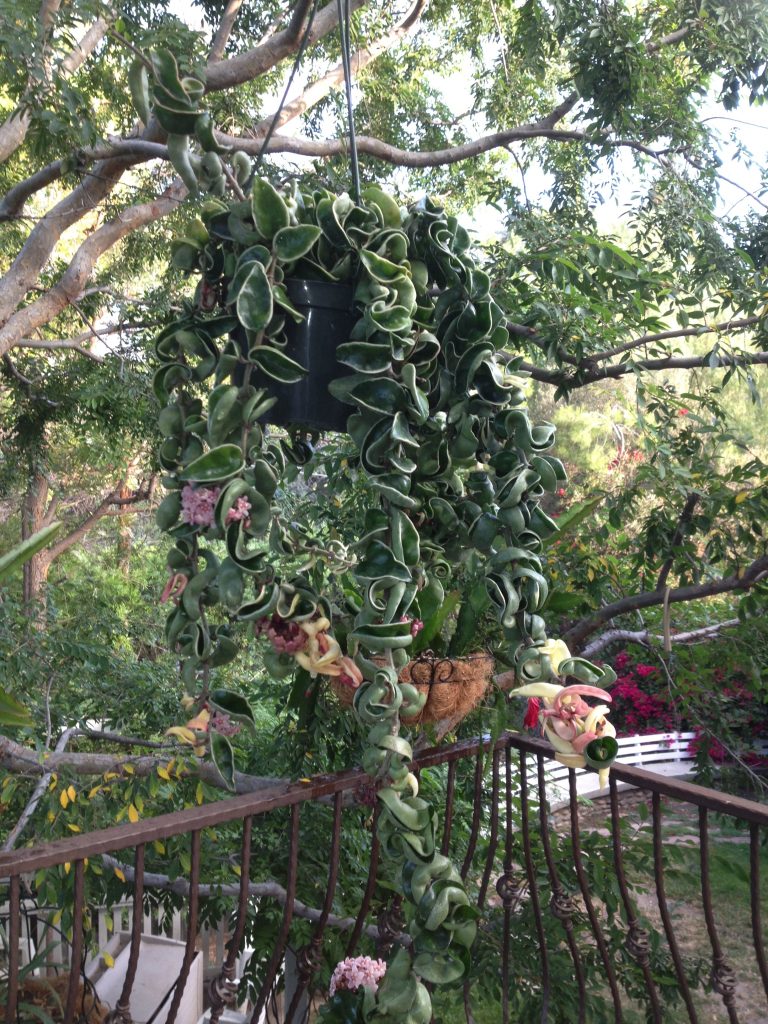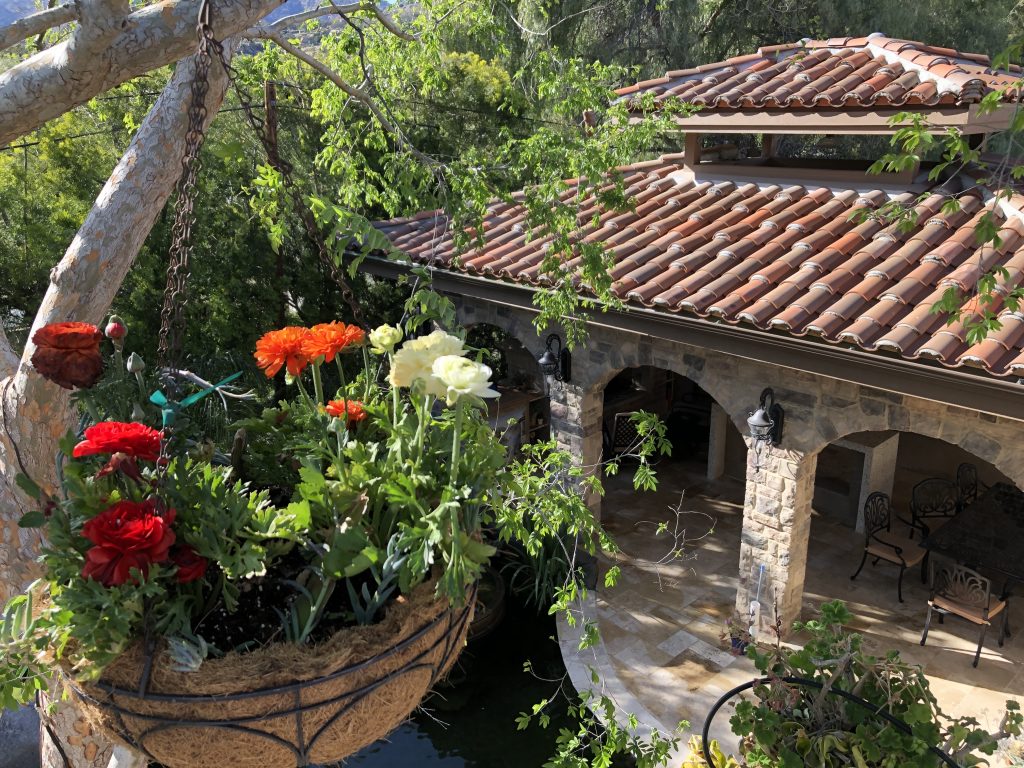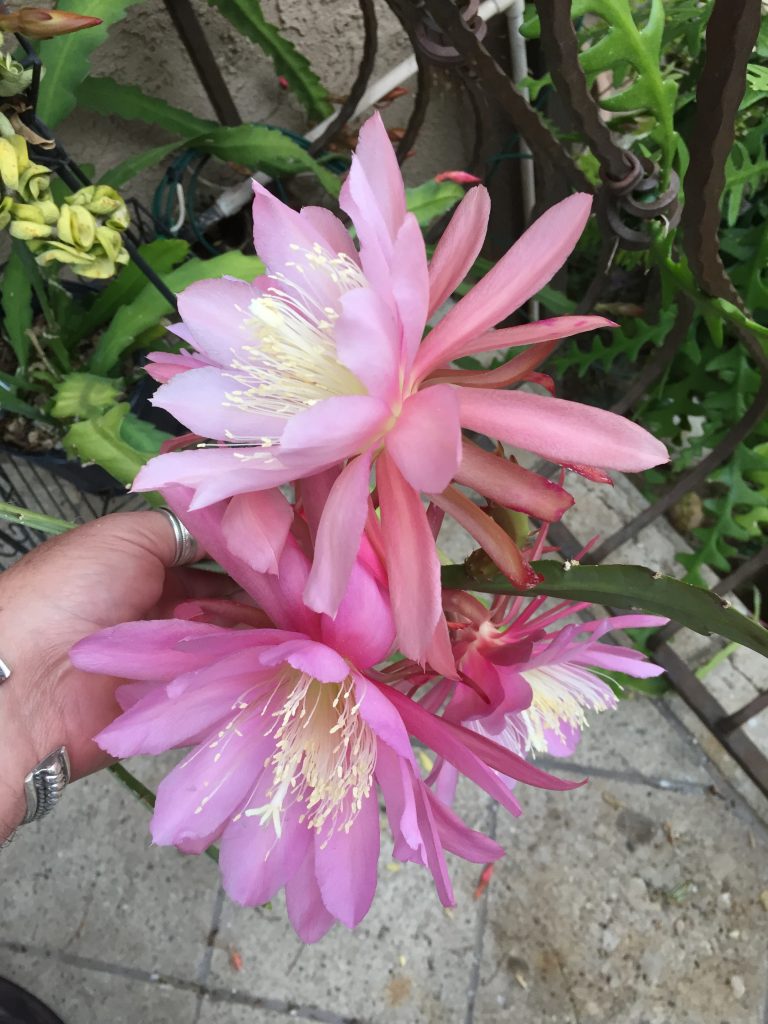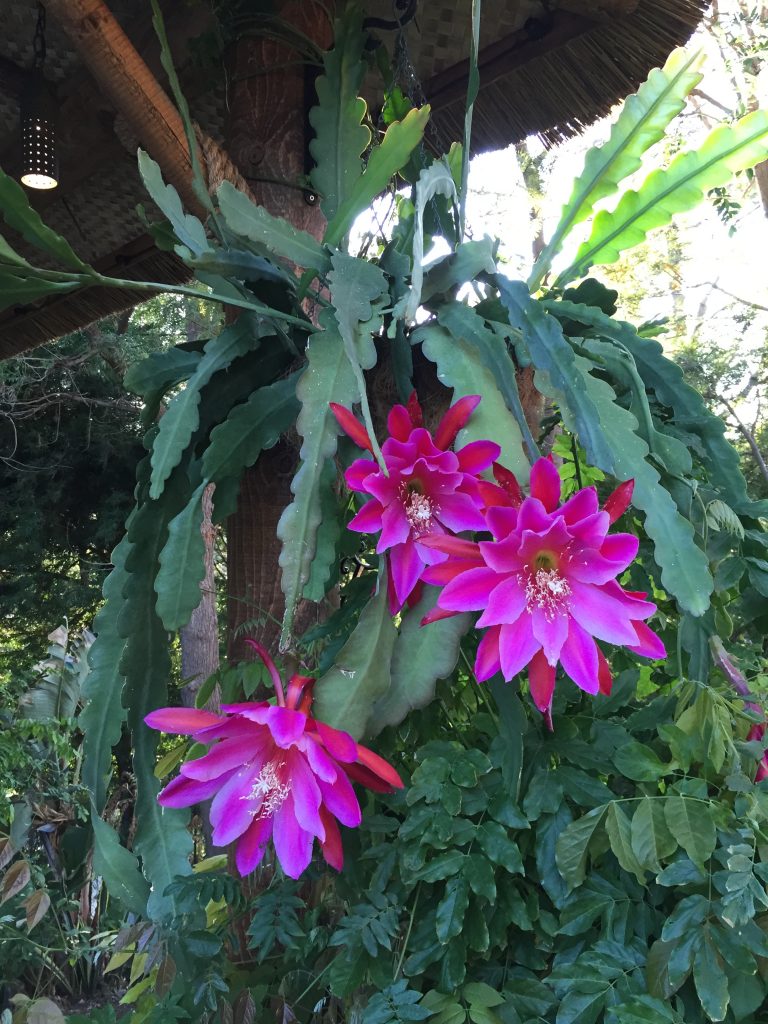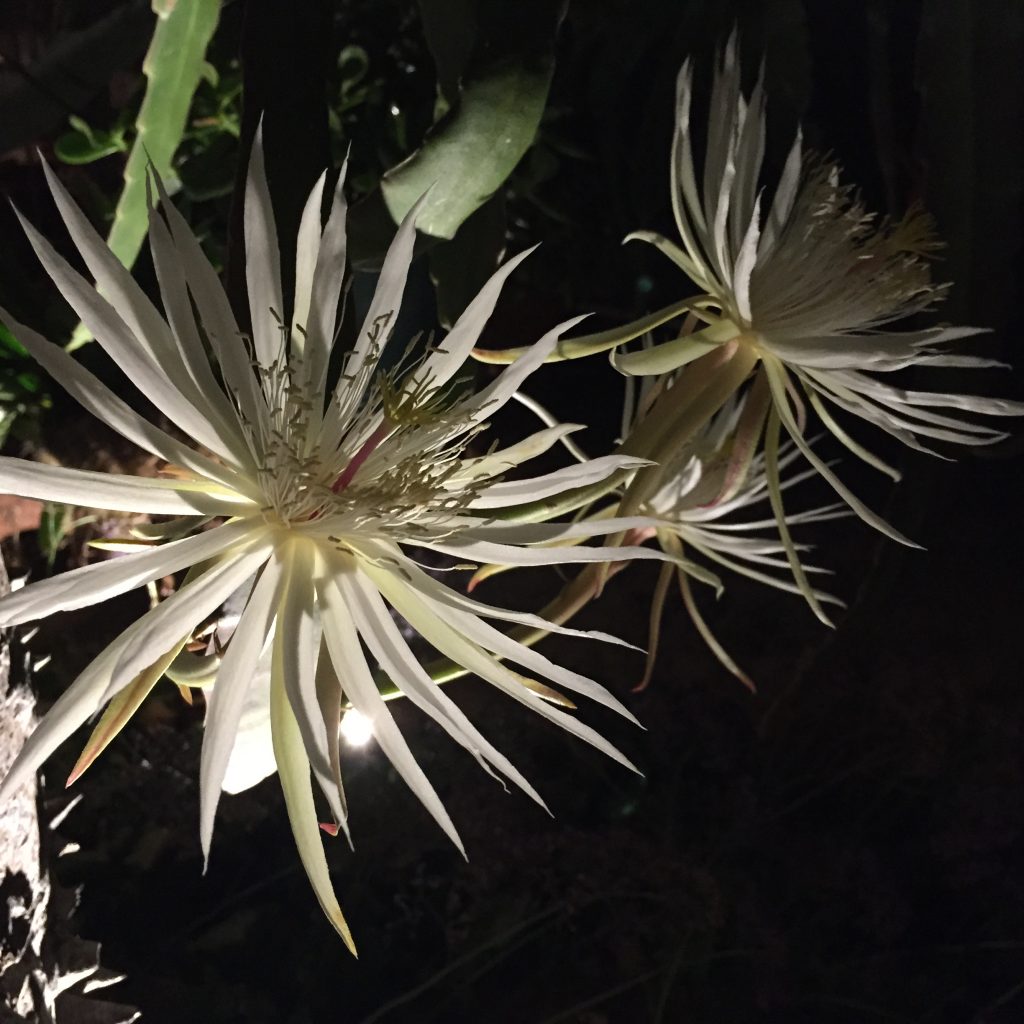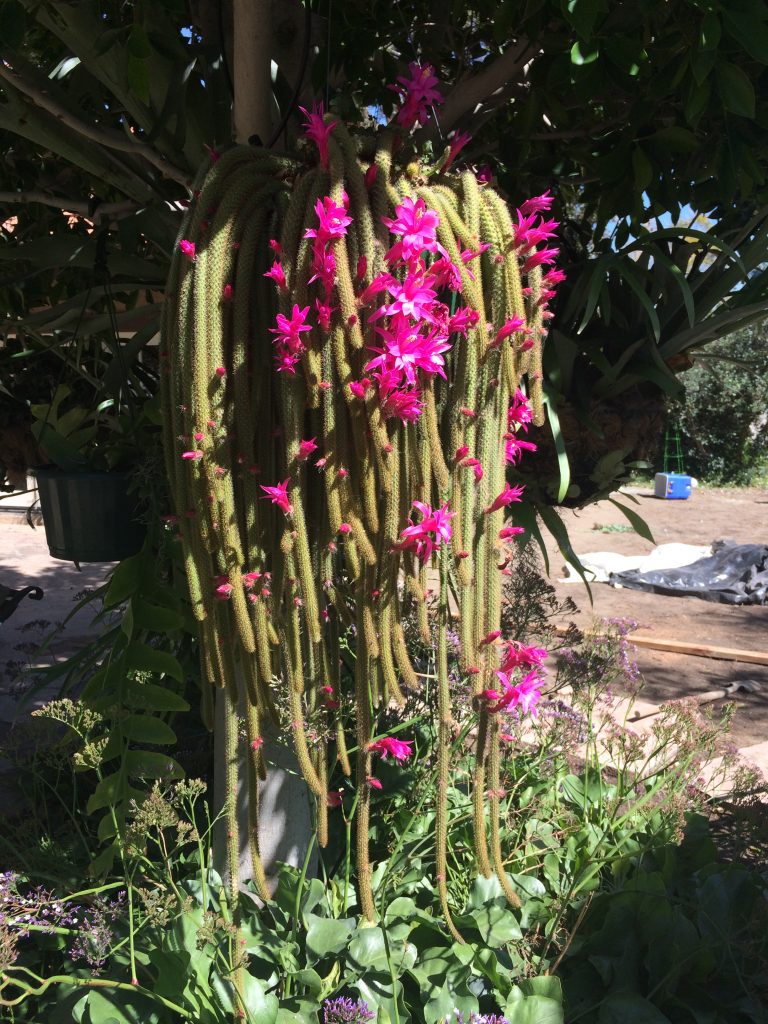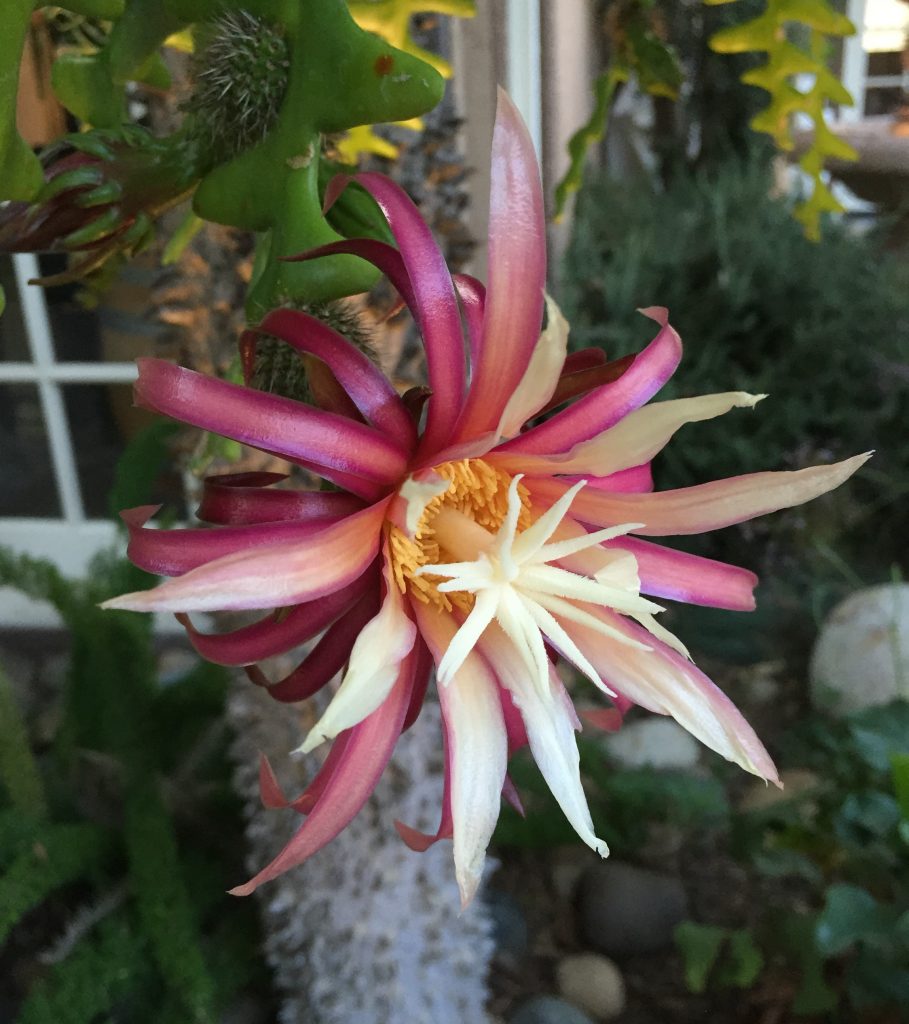The Buzz About Bees
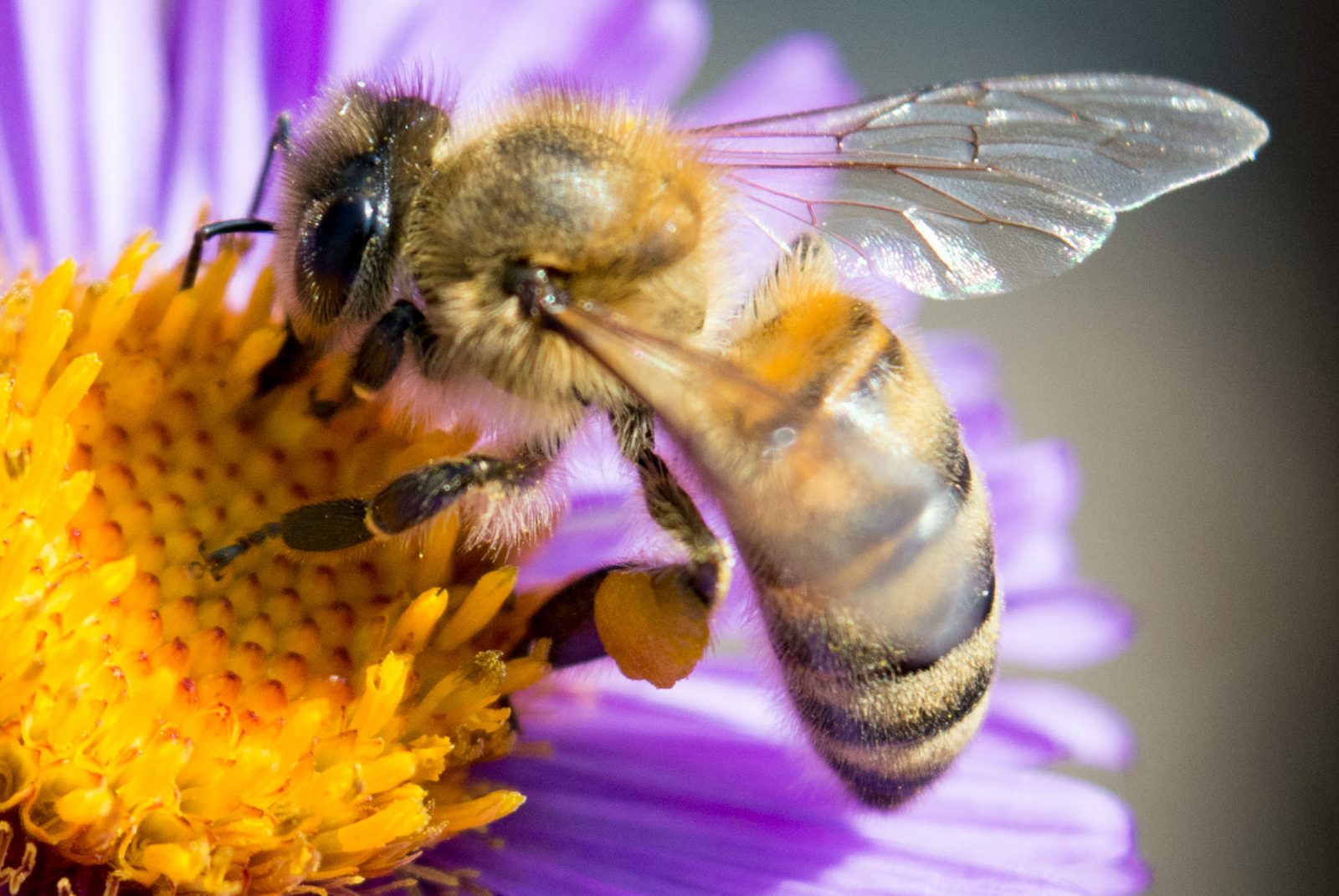
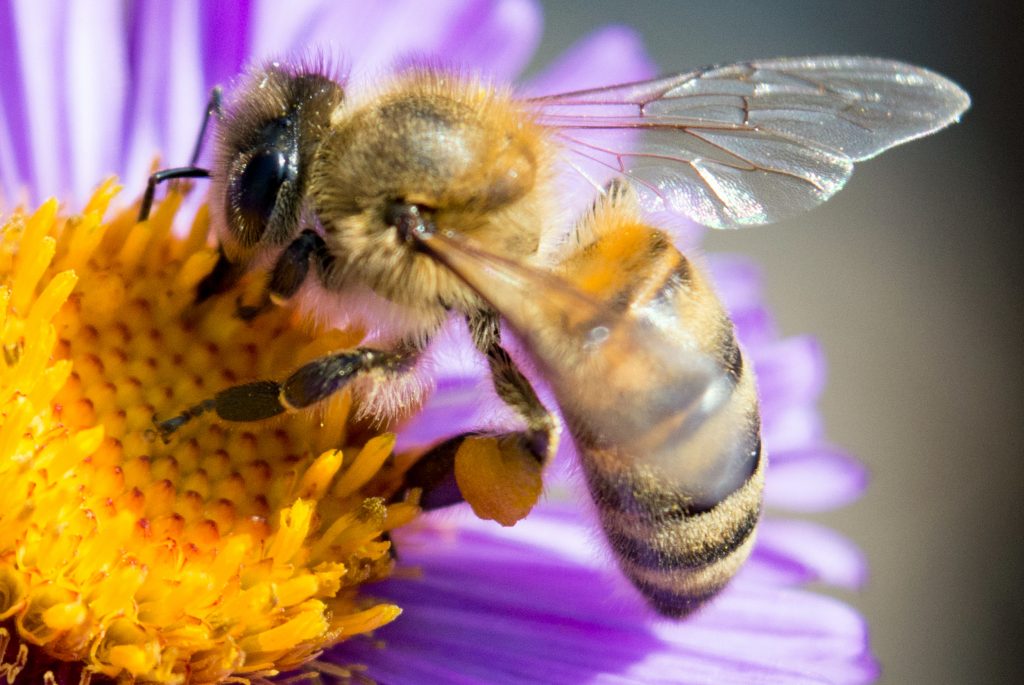
Scott Cohen is passionate about plants and especially those that produce beautiful flowers. Here he explains that while plants add a rich dimension to his designs, they do also attract pollinators, including bees, other insects, hummingbirds and even bats. Thankfully, it is impossible to have flowers without the creatures that help propagate them, but to his mind, having a garden blossoming with color and life is a source of tremendous joy and fascination.
By Scott Cohen
When I first meet with clients, we go through a thorough questionnaire that covers all the major aspects of their project, including the plants. Time and time again I’m working with clients who say, “I want flowers but I don’t want any bees.”
In those moments, I’m tempted to ask if their parents had the talk with them about the birds and bees, but instead I always explain that you can’t have flowers without bees. The sole purpose of any flower is to attract a bee. Yes, some attract flies, others attract hummingbirds or even bats. But all flowers exist for the purpose of pollination, the vast majority of which is done by bees.
Without bees, there are no plants, there is no food from plants, there is no growth and there is no flower production and, ultimately there is no life! The bottom line is, if you want flowers, you are going to have bees visiting your yard. It’s the way nature works. You cannot have one, without the other.
I understand that some people are afraid of bees, and a very small number of people are allergic, which is a serious medical concern no matter where you are. But bees pose very little threat to most of us. When bees are foraging in the garden, they’re not aggressive, they rarely sting when you leave them unbothered to go about their business. And when they do, the vast majority of people can handle it with no problem. As an active gardener my entire adult life, I’ve been stung several times, but it’s never more than a minor annoyance.
There are certainly plants that attract more bees than others, and I wouldn’t put those next to the pool or the outdoor kitchen, but farther out in the yard. And, if you have a client who insists on having flowers with no bees, there are some that don’t attract bees at all, but they will attract other types of insects, birds or even bats.
The plants we grow on our properties is all part the “urban forest” and it has to support bees because they are essential to the entire ecological balance of the planet. In recent years, there has been a dramatic decline in honey bee populations here in North America due largely to the use of some pesticides causing what is known as Colony Collapse Disorder. I won’t delve into that scary issue other than to say that when we support bees in our gardens, we’re helping sustain an insect that is both in trouble right now and absolutely essential to human survival.
Healthy bee populations are like clean water, we cannot exist without either.
FLOWER POWER
I’m the first to admit I’m passionate about this topic, largely because I love flowers. I grow hundreds of species and varieties in my home. ur company, appropriately named, The Green Scene, has a 1,600 square foot hothouse where we propagate flowers and other plants for use in our projects. All of my designs, utilize flowers, but unfortunately many companies in our industry don’t give much or any attention to the plants.
When we design a space that includes water and hardscapes, we be believe plants are every bit as important to the atmosphere and feeling of the space as any other element. When you relegate plants to a secondary consideration, you’re designing with one hand tied behind your back. Hardscape is one element, the water is another, the color of the materials, the design style, but so are the plants with their colors, textures and forms.
From an experiential perspective, flowering plants bring joy and beauty to the garden. They’re ever-changing and a source of endless fascination. They become points of personal pride and objects of conversation and admiration.
It makes no sense to leave them out of the design. When you do include flowers, and learn a thing or two about them, the creative opportunities expand dramatically. There are flowers that can fit within any design style, yet, I have noticed that with today’s penchant for contemporary design, some clients feel there shouldn’t be feel there shouldn’t be any flowers at all. Nothing could be further from the truth. When you look at different types of flowers and the plants that grow them, many are very sculptural in appearance and absolutely enhance contemporary settings.
When we try to move away from flowers, whether it’s concern about bees or a desire for a more maintenance-free landscape, we’re missing out on so much. They add to our lives and to the health and beauty of the world around us.
All of that is why I urge everyone to embrace and celebrate the world of flowering plants.
FROM MY GARDEN
Let’s take a look at some of my favorite flowers I grow at home and in our greenhouse, with an eye toward both the aesthetics and their ability to attract bees and other pollinators.
Epiphyllum: A type of “strap cactus” named for the flat and narrow dark leaves, Epiphyllum (Epi) comes in a spectrum of colors. I have over a hundred different colors hanging in pots in our garden. Some are night-blooming, but most are diurnal (daytime blooming). They produce absolutely spectacular blossoms and are relatively easy to care for. You propagate them by clippings because that’s the only way to reproduce the exact same color.
They do attract bees.
Carrion Flower: This is an interesting plant. It’s a succulent that looks thorny, but it’s not, they’re soft. They produce giant red flowers that look like something from outer space. They have a kind of almost surreal fleshy appearance and a very mild scent that smells like rotting meat. That sounds horrible, but you practically have to stick your nose directly into the blossom to smell it. It produces pods that will rapidly peel back to reveal the flower, you can actually watch it happen. It’s amazing.
They do not attract bees, but they do attract flies.
Bearded Iris: I have more than 30 different colors of this spectacular plant, displayed along one side of our Bocce court. The delicate petals looks as though they could float on air, the colors are subtle yet distinct. They don’t bloom all that long, only about six weeks each year, but when they do, it’s a pageant.
In our garden we have flowers that bloom at different times of, spring, summer, late summer and fall. So, it’s always changing and it brings me joy to watch the seasons complimented by the life cycle of these spectacular plant species.
Yes, Bearded Iris attract bees, but it’s worth it to have something of such exquisite beauty.
Dragonfruit: We have several varieties of Dragonfruit, which grows on a climbing cactus vine. It’s a great plant to incorporate with columns, trees or other vertical garden structures. These mind-blowing flowers can be 10 inches across. They mostly bloom at night and each flower only lasts a day. They come out in the early evening and then by mid-morning, they’re gone. If the flower has been pollinated, it leaves behind a delicious fruit.
Being nocturnal, they don’t attract many bees, but they do appeal to bats and insects, which provide the pollinating services.
Hindu Rope: This wild-looking succulent is very slow growing, but it is one of the most beautifully unusual plants you’ll find, perfect for hanging pots, with the “ropes” growing to four feet in twisty lengths. It has small bundles of tiny pink flowers, that are so perfect they almost look fake. The foliage has deep green, waxy finish. An interesting characteristic, new growth has a variegated light pink and cream coloration, slowly becoming green as it matures.
They can be easily grown from cuttings, making them a great “friendship plant,” meaning plants that you can share with others by giving clipping or splitting bulbs. This is an ongoing pleasure for me as friends regularly send me photos of plants they have grown from cuttings that I snipped for them when they visited my garden over the years.
Hindu Rope does attract bees, but who wouldn’t want to hang around these works of nature’s art.
Hyrdrangea: A universal favorite, Hydrangeas are spectacular in the garden and make great bouquets. They almost shout out loud in their colorful abundance, and they do it with an interesting botanical twist. The pH of the soil determines the color of the flower. Pink flowers come from alkaline, high pH soil, while the blue flowers are acidic. You can modify the color of the flower by the fertilizer you use. White “French” Hydrangeas are always white regardless of the soil’s hydrogen ion content.
They attract lots of bees.
Ranunculus: These seasonal bulbs are great for adding vivid color. I keep them in hanging baskets because critters, such as squirrels, racoons or even some dogs will dig them up. Most of my baskets are watered using a drip system. Ranunculus comes in a variety of vivid colors.
Affirmative on the bees.
Rose Queen: Another color of Epi that just takes your breath away. This is why I spend time in the garden, it rewards us with different flowers year ‘round, and it does the same for many of our clients who get excited about gardening. You see a flower like this and it gives you a pause in the day-to-day grind where you’re running all the time. It brings me great pleasure.
Astronaut: This Epi is hanging from our palapa next to a stand of Wisteria. It’s amazing how the right plantings, and especially those that produce such amazing flowers, will accentuate and bejewel architectural elements, walls, columns, pergolas, gazebos, even statuary can all be draped in greenery and color. I love how the petals on these flowers look like birds’ feathers, they’re so delicate.
Bees, yes and yes.
Night Blooming Cactus: This flower was made famous in the movie hit move, “Crazy Rich Asians.” There’s a scene where everybody runs outside at night to witness these plants in full bloom. They only bloom at night and then drop off the next morning, meaning these nocturnal flowers are a rare treat. You might have seven nights in a row of flowers, but they are different from the night before. The blossoms have a soft fragrance and they are designed to attract insects and bats.
Bees do not keep the same hours.
Bees enjoy them, as well,
Red Orchid Cactus: Another Epi, this variety put out beautifully delicate and colorful flowers. The petals are very thin and slightly translucent, so they look really spectacular when they catch the light.
Bees, yes.
Zig Zag: This Epi is my favorite of all flowers. It looks like something a modern artist would dream up. It has unique structure and alluring colors. Simply mesmerizing.
Bees cannot resist, and neither can I!
Scott Cohen is a “Garden Artisan” and president of Green Scene Landscaping & Pools, a watershaping design and construction firm based in Chatsworth, Calif. A widely published author and popular speaker, Cohen is known for his gardens that combine outdoor living with inspired artistic details, including the use of copious flowering plants.
Image attribution: Bee photo by Mr. Background, Shutterstock.com, flower photos by Scott Cohen.











